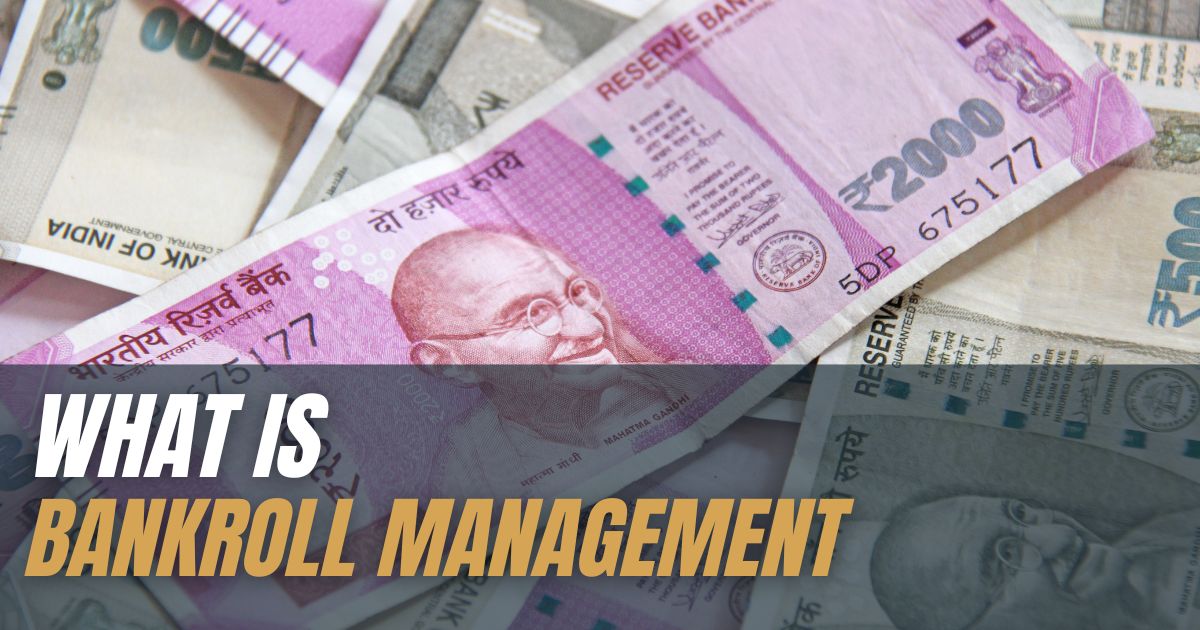In cricket betting, bankroll management is an essential principle that may either drive a bettor to his goal or bring them to a loss. It is not about only placing bets. It’s about carefully planning your finances so that you earn more money in the future.
This detailed guide will give you the knowledge and strategies for Indians cricket betting bankroll. We will explore the central methods, show you the effective techniques of risk management, and unravel unique betting strategies. They are all specially designed for the fans of Indian cricket.
What Is Bankroll Management?

Imagine would you go to a battlefield without armor? Well, that’s exactly how betting without a well-built bankroll strategy feels like. This is financing business as you know it and puts some spirit of cricket at bay.
Cricket betting bankroll control is like an art that allows you to strategically make decisions on how you distribute, follow, and manage your betting funds. For me, it precisely means a cool and a rational head, evaluating wisely your readiness for risk, and keeping your love for cricket in check when you make your financial choices.
The Importance of Bankroll Management

Why is cricket so important for betting and keeping track of money? Here are some good reasons:
- Financial Stability: Having a positive attitude and being responsible is important for financial stability. Managing your money wisely means you don’t have to use up your savings, so you can enjoy betting without hurting your finances.
- Long-Term Perspective: The future is a long-term thing, not a quick fix. If you handle your money well, you’re setting yourself up for a happy future. You can have a steady income instead of trying to win quickly, that could drain your resources.
- Adaptability: Cricket is not just one thing—Tests, ODIs, and T20s all have their own challenges. Managing your money well lets you adjust your betting strategies to each game to increase your chances of winning.
- Emotional Control: Cricket is a game that’s full of feelings. But when it comes to gambling, you gotta keep your cool. If you manage your money well, you can stay focused and not make rash choices based on your emotions after losing some bets.
- Learning Experience: Cricket betting may be a brilliant mastering revel in. With tracking of your bankroll and evaluation of your bets, you get precious insights into your strengths and weaknesses as a bettor. With this, you may pass about refining your strategies, being an extra informed bettor.
- Survival of Multiple Losses: Losing streaks are the order of the day. But with right management of the bankroll, you may weather those storms without compromising your usual financial circumstance.
Remember, cricket betting bankroll management isn’t about getting rich quick. It’s about enjoying the thrill of the game while building a sustainable and responsible betting experience.
Setting Your Cricket Betting Bankroll

Now that you understand the importance of cricket betting bankroll management, let’s build the foundation for your success. This involves setting a realistic and sustainable initial bankroll.
Here’s a step-by-step guide:
Be Honest with Yourself
Before diving in, assess your financial situation honestly. Allocate a specific amount you’re comfortable dedicating solely to cricket betting. This should be money you can afford to potentially lose without impacting your daily life.
Get to Know The Unit Size
Imagine a unit as your standard betting amount. It should be a fixed percentage (usually between 1% and 5%) of your total bankroll. This ensures you don’t risk a significant portion of your funds on a single bet.
Determining Your Bankroll Size
There’s no magic number. A good starting point is a bankroll that allows you to place 20-50 bets using your chosen unit size. For example, with a ₹10,000 bankroll and a 2% unit size, each bet would be ₹200. This allows you to spread your bets and weather some losses without significant impact.
Factoring in Risk Tolerance
Are you a conservative bettor who prioritizes minimizing losses? Or do you have a higher risk tolerance and are comfortable with potentially larger wins (and losses)? Factor this into your unit size and overall bankroll allocation.
Understanding Bankroll vs. Stake Size
Bankroll is your total allocated betting funds. Stake size is the amount you wager on a single bet, which should be determined by your unit size based on your bankroll.
Here’s an example to illustrate:
- Total Bankroll: ₹20,000
- Unit Size (chosen): 3%
- Stake Size per Bet (Unit Size x Bankroll): ₹20,000 x 3% = ₹600
Remember: This is just a starting point. As you gain experience and confidence, you can adjust your bankroll and unit size accordingly.
Now that you have a solid foundation, let’s delve deeper into the world of risk management techniques specifically for cricket betting.
Risk Management Techniques in Cricket Betting

Cricket may be a gentleman’s game, but the world of betting involves real financial risks. Here’s where risk management techniques come into play.
They’re your armor in the betting arena, helping you navigate the uncertainties of the game and protect your hard-earned bankroll.
1. Setting Stop-Loss Limits
Imagine a safety net for your bankroll. A stop-loss limit is a predetermined point at which you stop betting after a certain number of losses or a specific percentage decrease in your bankroll. This helps you avoid chasing losses and protects your remaining funds.
Example: You set a stop-loss limit of 20% on your ₹20,000 bankroll. If your bankroll dips below ₹16,000 due to losses, you stop betting until your financial situation allows you to start again with a fresh bankroll.
2. Smart Money Management Strategies
There are various money management strategies that can help you minimize risk while maximizing potential profits. Here are two popular approaches:
Flat Betting: This involves placing a consistent bet amount (your unit size) on every match, regardless of the perceived odds or your confidence level. It’s a simple and conservative approach, suitable for beginners.
Proportional Betting: This strategy adjusts your bet size based on your confidence in a particular outcome. You allocate a higher unit size for bets you believe have a stronger chance of winning. This approach offers potentially higher returns but requires a good understanding of cricket and the ability to assess odds objectively.
3. Avoiding Emotional Betting
We all love our favorite teams, but emotions can cloud judgment when it comes to betting. Here are some tips to avoid emotional betting:
Avoid letting your fandom cloud your judgment. Analyze the match objectively and assess the odds rationally.
Don’t chase losses in a desperate attempt to recoup your money. Stick to your predetermined betting strategy and avoid impulsive decisions fueled by frustration.
Take breaks. Step away from the betting scene if you’re feeling overwhelmed or emotional.
4. Focus on Value Betting
Not all bets are created equal. Value betting involves identifying situations where the bookmaker’s odds overestimate the likelihood of a particular outcome. By exploiting these discrepancies, you can potentially increase your chances of winning in the long run.
Here’s an example: If a bookmaker sets the odds of a specific batsman scoring a century at 4/1, but your analysis suggests a higher probability based on the batsman’s form and past performance, then there’s potential value in placing a bet on that outcome.
People Also Ask (PAA)
Think of a unit size as your standard bet amount. It’s usually a small percentage (between 1% and 5%) of your total betting bankroll. This way, you don’t risk a big chunk of your money on a single bet.
Conduct thorough research before choosing a platform. Look for licensed and regulated sites with a proven track record of security, fair odds, and timely payouts. Some popular options for Indian bettors include 20Bet, Dafabet, and Betwinner.
Maintaining a record of your bets is essential. Utilize a simple spreadsheet or explore dedicated cricket betting apps that allow you to track your wagers, wins, losses, and overall bankroll performance. This data analysis helps you identify areas for improvement and refine your strategies over time.
As you gain experience and confidence, you can consider changing your unit size. If you’re feeling more adventurous (and have a good understanding of cricket), you might increase it slightly. But if you prefer to play it safe, you can keep it low.
Losing streaks happen! But if you encounter one, don’t panic. Remember, you set a stop-loss limit beforehand (like a maximum amount you’re willing to lose). If you reach that limit, take a break from betting and come back with a fresh head later.
Here are some tips to avoid emotional betting:
- Set Limits: Set a budget for betting and be responsible. Only wager what you can comfortably afford to lose.
- Track Your Bets: Use a tool to monitor your wagers and see how you’re doing. This helps you stay on track.
- Take Breaks: Step away from betting if you’re feeling frustrated or emotional. Stay calm and regroup! Keep your emotions in check and don’t let them influence your betting choices.
The Bottom Line
In conclusion, bankroll management is a cornerstone of successful cricket betting. By understanding the importance of managing your funds effectively, implementing risk management techniques, and employing strategic betting strategies, you can increase your chances of long-term profitability.
Remember, it’s not just about winning individual bets; it’s about preserving and growing your bankroll over time. So, next time you place a bet on a cricket match, keep these principles in mind to maximize your chances of success. Happy betting!
Ready to unlock the secrets of successful cricket betting? Look no further than GCBI! Gain access to exclusive tips and insights to outsmart the competition.
